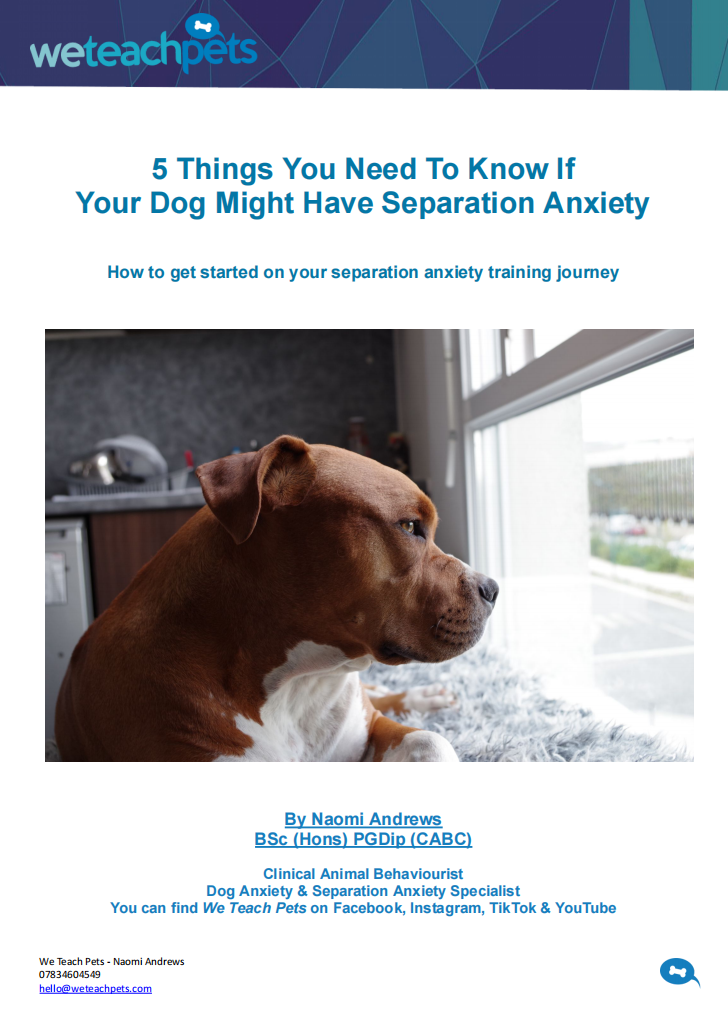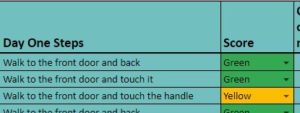If you think your dog might have separation anxiety
Then you and your dog would benefit from separation anxiety training. Maybe your dog is showing unwanted, unsettled or anxious behaviour when you leave them alone. Perhaps they’re barking, howling, toileting, destructive, or otherwise distressed? Separation anxiety can not only significantly affect your dog’s general wellbeing, but also yours!
Ways separation anxiety can affect the human side of the equation
- Missing social gatherings because you have to be at home with your dog. Or coping with the guilt of leaving them at home.
- Feeling trapped and frustrated because every trip to the shop has to be planned in advance.
- Dreading the mess and expense you are coming home to this time. Or the damage your dog has done to themselves in the process.
- More stressful noise complaints from the neighbours, or the council.
- Worrying about your dog’s wellbeing, after all, it can’t be good for them to be so upset.
Separation anxiety is an emotional disorder which causes upset, even outright panic, for dogs, and therefore for their human family. In the past this has been seen as an almost impossible condition to resolve. As a matter of fact, with commitment and patience, and new ways of using technology, separation anxiety training has been levelled-up. It can be successfully treated!
How the We Teach Pets separation anxiety programmes work
The programmes are simple to follow, and tailored to you and your dog’s specific needs. The initial programme runs for either 4 or 8 weeks; I have outlined the process below:
Support after the initial package ends
At the end of the programme we will discuss your dog’s progress, and further aims moving forwards. Separation training takes time, but you may feel that after 4 weeks you now have the tools to continue DIY. You can always check back in if you need anything. Alternatively, many people benefit from continuing to roll the package over for more 4 weekly blocks. You then know that you have ongoing support and someone on-hand to guide you through the process. This is the most efficient and effective option for long term change.
Many pet insurers will reimburse the fees if your policy allows as I am a full member of the Association of Pet Behaviour Counsellors.
What format is the training done in?
The separation anxiety training is carried out totally online. Remote training has revolutionised treatment by reducing waiting times and reducing cost by eliminating travel time. But above all it eliminates the inevitable difference in behaviour due to a visitor being present and outcomes are much more successful. Using videos and video calls I will see your dog exactly as you do, with no distractions changing their behaviour. It’s no good your dog being comfortable when I leave them alone, you want it to be just like real life.
How do we make it work in real life, outside of training?
A common question I get during separation anxiety training is how we move from training set-ups to real life. This is a valid concern because our ultimate goal is that you can leave the house to carry out your normal daily life. Not watching cameras and scoring absences forever!
The key is, we need enough repetition of a particular absence length that is successful. Then we will be confident that your dog will remain just as settled in real life as in training. The training process is set up to be as close to real life for your dog as possible. This means that they won’t know the difference.
I love celebrating reaching milestones with owners reporting back snoozing dogs.
My clients and I love celebrating the milestones together
 – Nipping to the post box.
– Nipping to the post box.
– Popping to the shop for a few bits.
– Meeting a friend for coffee.
– Going out for dinner.
– Attending in person meetings at work.
No complaints from neighbours, no worrying about what you’re going to come home to, and you know that your dog is safe and relaxed at home.
More separation anxiety content
Free Separation Anxiety Help Here!




 You will receive a link to a shared document where you will find a list of ten short steps to complete. Next to each step you will score the task and make some comments. I will check the document each evening, and then, depending on your feedback, write your steps for the following day. You can see a basic example snippet here:
You will receive a link to a shared document where you will find a list of ten short steps to complete. Next to each step you will score the task and make some comments. I will check the document each evening, and then, depending on your feedback, write your steps for the following day. You can see a basic example snippet here: